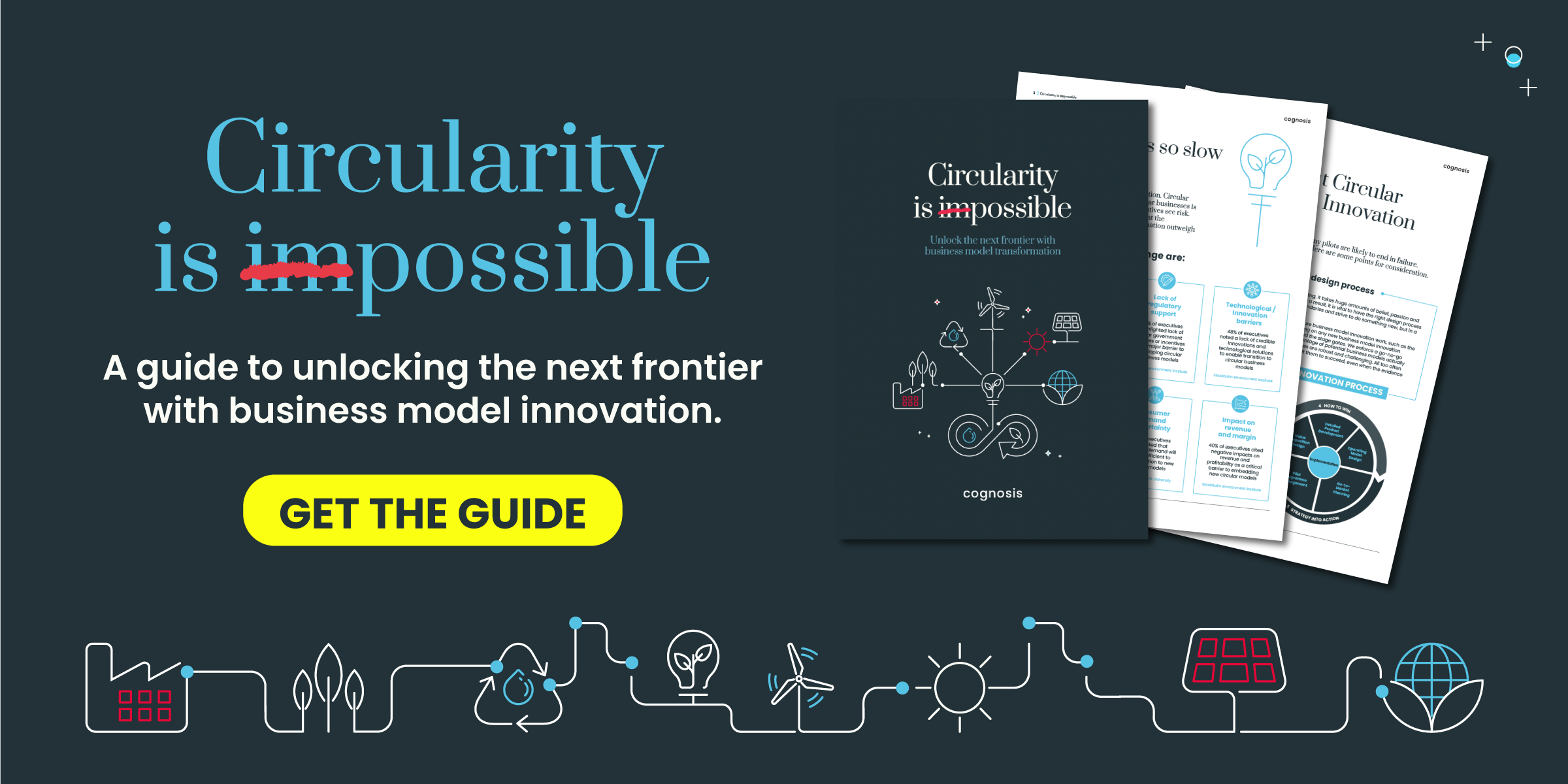Be honest. Is circularity part of your strategy for a sustainable future?
Business leaders in the UK understand that the circular economy will play an increasingly important role in the long-term fate of their company. Change is inevitable and, frankly, essential. But how to get started is much less obvious.

Circularity has risen up the strategic agenda of corporate sustainability in the UK, as business leaders respond to the mounting pressure of environmental targets, public opinion and regulatory requirements. The appetite for action is further whetted by growing acceptance that circularity is the natural next step for the future of humanity and the planet we share.
> RELATED VIDEO: Unlock the next frontier with business model transformation
The noise around circularity will only grow louder
What is circularity?
Unlike the traditional linear model of “take, make, dispose”, the circular economy seeks to optimise resource efficiency by keeping products and materials in use for as long as possible through a combination of reuse, repair, remanufacturing, and recycling.
The Circular Economy is tipped to swell to $4.5trn by 2030 and as much as $25trn by 2050, while reducing greenhouse emissions by 45% by 2050. Younger shoppers especially are seeking out ethical brands, with one in three (30%) consumers turning their backs on certain products due to sustainability-related concerns.
Resource scarcity will also drive up the cost of raw materials and leave companies vulnerable to global supply chain disruption. And if the carrot fails to influence strategy planning, then the regulatory stick may mandate it. The UK’s 2050 net-zero carbon targets is contingent on a rubbish revolution and companies will increasingly face penalties for non-compliance to waste reduction initiatives.
Is that enough?
Increasing recycling, refurbishment and regeneration make a compelling argument for COOs and CFOs alike. Yet, the bigger questions remain.
- Will a tweak here and a shave there make the fundamental environmental difference that’s needed?
- Also, are companies still leaving themselves at risk of existential disruption from a circular-native competitor?
Some business leaders are taking their commitment to a sustainable future further by innovating entirely new approaches to value creation that are built on circularity. Look how electronics leader Philips is offering products-as-a-service to extend the lifetime and recyclability of goods through subscriptions – rather than outright ownership. Or how packaging firm DS Smith has invested in R&D to make sustainability a pillar of its global expansion.
These foresighted businesses are looking beyond operational optimisation to bring new business models to market or make strategic acquisitions and partnerships, so that their company stays ahead of change. They want to lead the revolution, rather than become a high-profile victim.
But for many others, any transition from linear to circular business models looks both difficult and full of risk. That’s the uncomfortable truth about circularity. While the long-term benefits seem a no-brainer, the short-term implications scream no-way. Pivoting to circular models can feel like commercial hari-kari, given the high up-front costs, technological barriers and damaging impact on revenue, margin and cash flow. Like all innovation, there is no guarantee of success and a price for getting it wrong.
The first step is the hardest
So, how do companies turn something that appears impossible into a workable planning strategy? Here are three pointers to help fuel the conversation about circular business model innovation.
- Define what 2040 looks like. Discuss the likelihood of circular regulation in your key geographies, and the pace and focus of disruptive circular innovation in your industry. How will consumers, competitors and investors respond over the next five, 10 and 15 years?
- Identify opportunities for investment. Horizon scanning requires a good working understanding of the kinds of innovations and start-ups that are driving new models across your value chain. What are the feasible concepts over the near, mid and long-term?
- Establish a vision and credible goals. Putting it down on paper makes it official. Your pace and scale of business model change might be modest at first, with just a couple of pilots to get the ball rolling. But at least your circular journey has begun.
The time to act is now
The shift to circular business models will likely prove the biggest single corporate transformation in the next 30 years. There will be setbacks and pushbacks, inflection points and tipping points. Expect winners and losers. But doing nothing is not an option.
Businesses that actively monitor new innovations and consumer trends will identify the right time to move. They will reap the usual early adopter benefits of competitive edge, reduced costs, customer loyalty and brand reputation.
Simply writing off circularity as a fleeting trend is a far riskier course of action.


